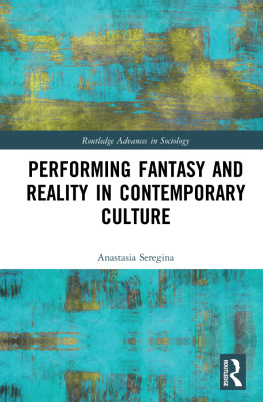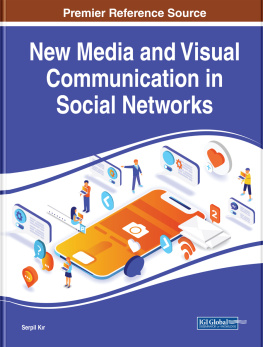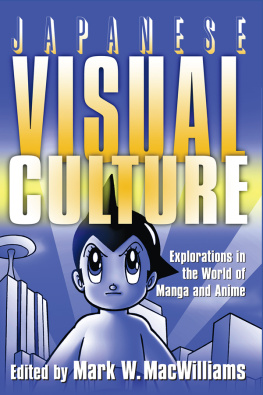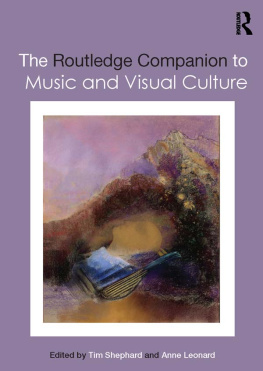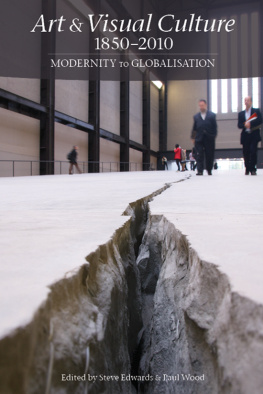
Mobility and Fantasy in Visual Culture
This volume offers a varied and informed series of approaches to questions of mobilityactual, social, virtual and imaginaryas related to visual culture. Contributors address these questions in light of important contemporary issues such as migration; globalisation; transnationality and transcultural difference; art, space and place; new media; fantasy and identity; and the movement across and the transgression of the proprieties of boundaries and borders. The book invites the reader to read across the collection, noting differences or making connections between media and forms and between audiences, critical traditions and practitioners, with a view to developing a more informed understanding of visual culture and its modalities of mobility and fantasy as encouraged by dominant, emergent and radical forms of visual practice.
Lewis Johnson is Associate Professor of History and Theory of Art and Visual Culture in the Department of Photography and Video, Baheehir University, Istanbul, Turkey
Routledge Advances in Art and Visual Studies
1 Ethics and Images of Pain
Edited by Asbjrn Grnstad and Henrik Gustafsson
2 Meanings of Abstract Art Between Nature and Theory
Edited by Paul Crowther and Isabel Wnsche
3 Genealogy and Ontology of the Western Image and Its Digital Future
John Lechte
4 Representations of Pain in Art and Visual Culture
Edited by Maria Pia Di Bella and James Elkins
5 Mangas Cultural Crossroads
Edited by Jaqueline Berndt and Bettina Kmmerling-Meibauer
6 Mobility and Fantasy in Visual Culture
Edited by Lewis Johnson
Mobility and Fantasy in Visual Culture
Edited by
Lewis Johnson
First published 2014
by Routledge
711 Third Avenue, New York, NY 10017
Simultaneously Published in the UK by Routledge 2 Park Square, Milton Park, Abingdon, Oxon OX14 4RN
Routledge is an imprint of the Taylor & Francis Group, an informa business
2014 Taylor & Francis
The right of the editor to be identified as the author of the editorial material, and of the authors for their individual chapters, has been asserted in accordance with sections 77 and 78 of the Copyright, Designs and Patents Act 1988.
All rights reserved. No part of this book may be reprinted or reproduced or utilized in any form or by any electronic, mechanical, or other means, now known or hereafter invented, including photocopying and recording, or in any information storage or retrieval system, without permission in writing from the publishers.
Trademark Notice : Product or corporate names may be trademarks or registered trademarks, and are used only for identification and explanation without intent to infringe.
Library of Congress Cataloging-in-Publication Data
Mobility and fantasy in visual culture / edited by Lewis Johnson. 1 [edition].
pages cm. (Routledge advances in art and visual culture; 6)
Includes bibliographical references and index.
1. Arts and societyHistory21st century. 2. Imagery (Psychology) in art. 3. Arts, Modern21st centuryThemes, motives. I. Johnson, Lewis, 1960- editor of compilation.
NX180.S6M62 2013
700.1'03dc23 2013014035
ISBN: 978-0-415-82129-2 (hbk)
ISBN: 978-0-203-63018-1 (ebk)
Typeset in Sabon
by Apex CoVantage, LLC
Contents
| LEWIS JOHNSON |
| STEPHEN BANN |
| WIBKE JOSWIG |
| SANDA MILLER |
| GLRU AKMAK |
| EKIN PINAR |
| HIU M. CHAN |
| ZAFER ARACAGK |
| MICHAEL STEPHEN LENT |
| HAKAN TOPAL |
| NATASCHA ADAMOWSKY |
| GIZEM KARAKA |
| ANNA SARA D'AVERSA |
| MERVE KURT |
| CHRISTIAN RITTER |
| ULRIKE BOSKAMP |
| INES LINKE |
| NERMIN SAYBAILI |
| BAAK IRAY |
| NANA ADUSEI-POKU |
| DEFNE TZN |
| LILIANA COUTINHO |
| MEHMET IRAY |
| VICTOR BURGIN |
| EGE KANAR WITH TEXTS BY ALEN ALIGRUDIC, KEREM OZAN BAYRAKTAR, TUN ALI AM, IVARS GRAVELEJS, MELISA NEL, HAYAL POZANTI, MERI ALGN RINGBORG, VILMA SAMULIONYTE, SINAN TANRIDA AND ERDEM TADELEN |
This collection developed out of the first International Symposium in Visual Culture held at Bahes ehir University, Istanbul, Turkey, on 20 and 21 May 2011. Thanks are due to the university for their hosting and sponsorship of the event, which was supported and promoted by Professor Haluk Grgen and Professor Melih Zafer Arcan who, with Dr. Tolga Hepdinler and myself, formed the organizing committee. We were ably assisted in our work by Tugba Gven, who worked apparently tirelessly before and throughout the event. My work on the scientific committee was rendered relatively easy by collaborators Professors Stephen Bann, Deniz Bayrakdar, igdem Kaf-escioglu and Beybin Kejanlioglu. We gratefully acknowledge the support provided by a grant from Tbitak which allowed for the participation of younger scholars. We would also like to thank all those members of Bahes e-hir University and the Faculty of Communication, including students of the Department of Photography and Video, who helped on and off stage. We particularly thank all those who gave papers, attended the event, made their work available to be shown in the accompanying exhibition Elsewhere , curated by Ege Kanar (and represented more or less obliquely in this book) or otherwise helped our work on fantasy or mobility, making the event something that gave momentum to a collection such as this.
Work on this volume has been supported by the publishers readers, who gave judiciously encouraging advice; Deniz Eyce, who has helped stoically with permissions; editorial assistant Andrew Weckenmann, whose prompt and clear guidance has helped to steer our efforts; and Felisa Salvago-Keyes, our editor at Routledge, whose advocacy and tolerance have been particularly appreciated. All those whose help has gone on, and may yet go on, unnoticed by me I should also like to acknowledge. I should also like to thank the contributors for their sometimes suspended persistence of effort, over the long months, in keeping going, thinking and working, to enable the publication of this collection. Dedicating my efforts for this volume to zge, the one with whom I rest and fly, remembering the work she has enabled transports me yet again.
Lewis Johnson
Image, Non-image Space and Trajectories of the Look
Lewis Johnson
Introducing Mobility and Fantasy
Once apparently marginal, the ramifications of questions of mobility in the conceptualisation, analysis and evaluation of visual culture continue to multiply. Across the disciplines that concern themselves with what is viewed and what is made to be viewedfrom the history of art, media studies, photography, film and video studies to anthropology, ethnology and ethnographythe range of questions concerning activities of viewing continues to extend, with questions of the mobility of spectators playing a significant part. It might be thought that this range of questions is fundamentally affected if not conditioned by the recent emergence of mobile viewing technologies, and it is part of the interest of this collection that it aims to respond to this sort of speculation. There is a growing literature that answers to Nikos Papastergiadis observation that the multiple effects of new technologies have been an under-researched field in migration studies, for instance. This collection responds by suggesting that, with the evident pluralisation of modes of transmission and reception of images offered by such mobile technologies, there is an opportunity and, more, a need to rethink the implications of mobility in viewing. As many have suggested, across the syncopated fields of the study of visual culture, if also in the so-called hard sciences, viewing is not to be taken simply as an ideal, stable and distanced observing of ideal, stable and distanced objects, but is rather a series of activities, differently undertaken and differently motivated, that is implicated in what it views. If viewing is not this sort of objectivist observing, which is rather a theoreticist fantasy of immobility of subject and/or object, the relations between mobility and viewing are in need of better axioms.



